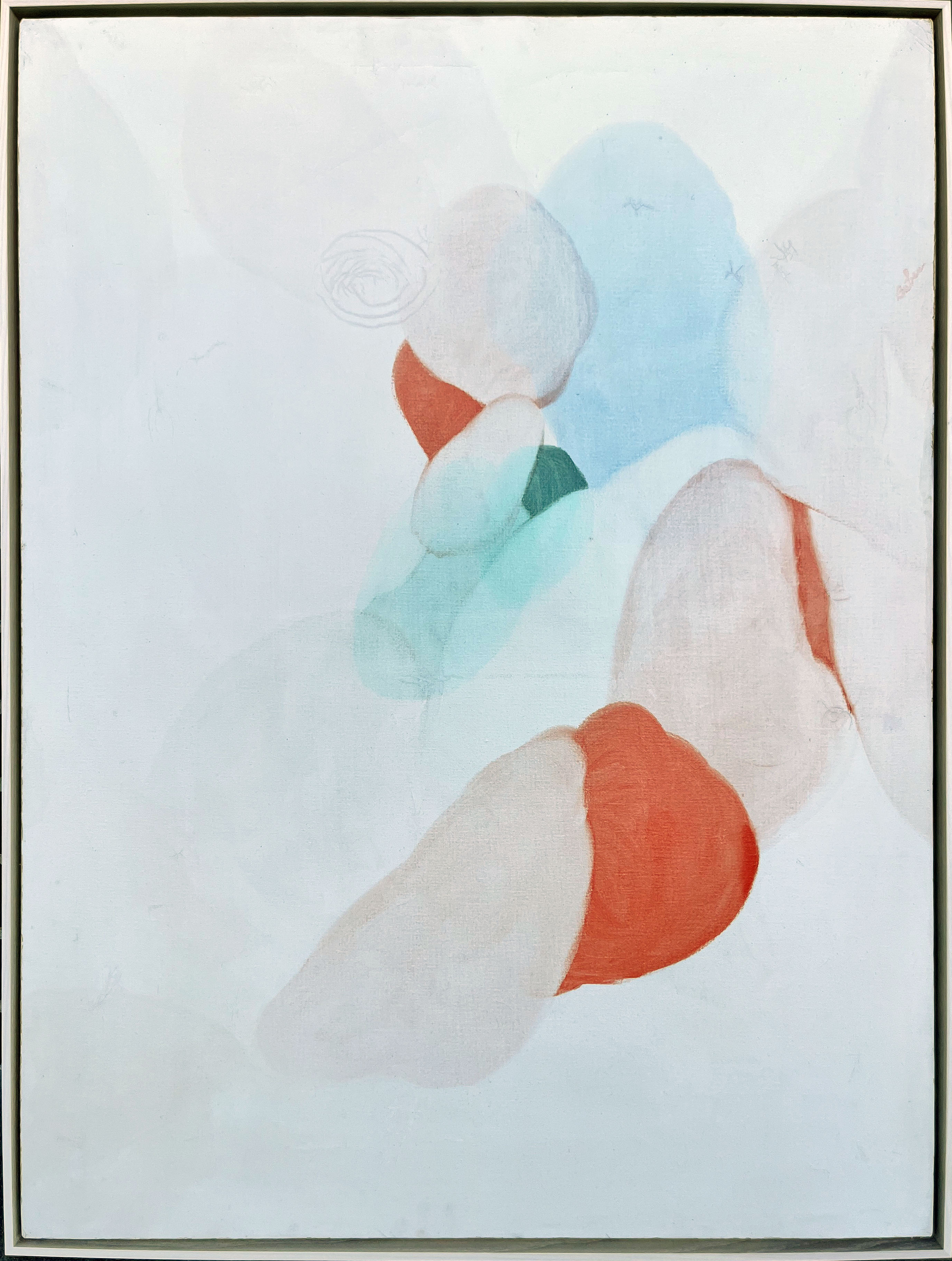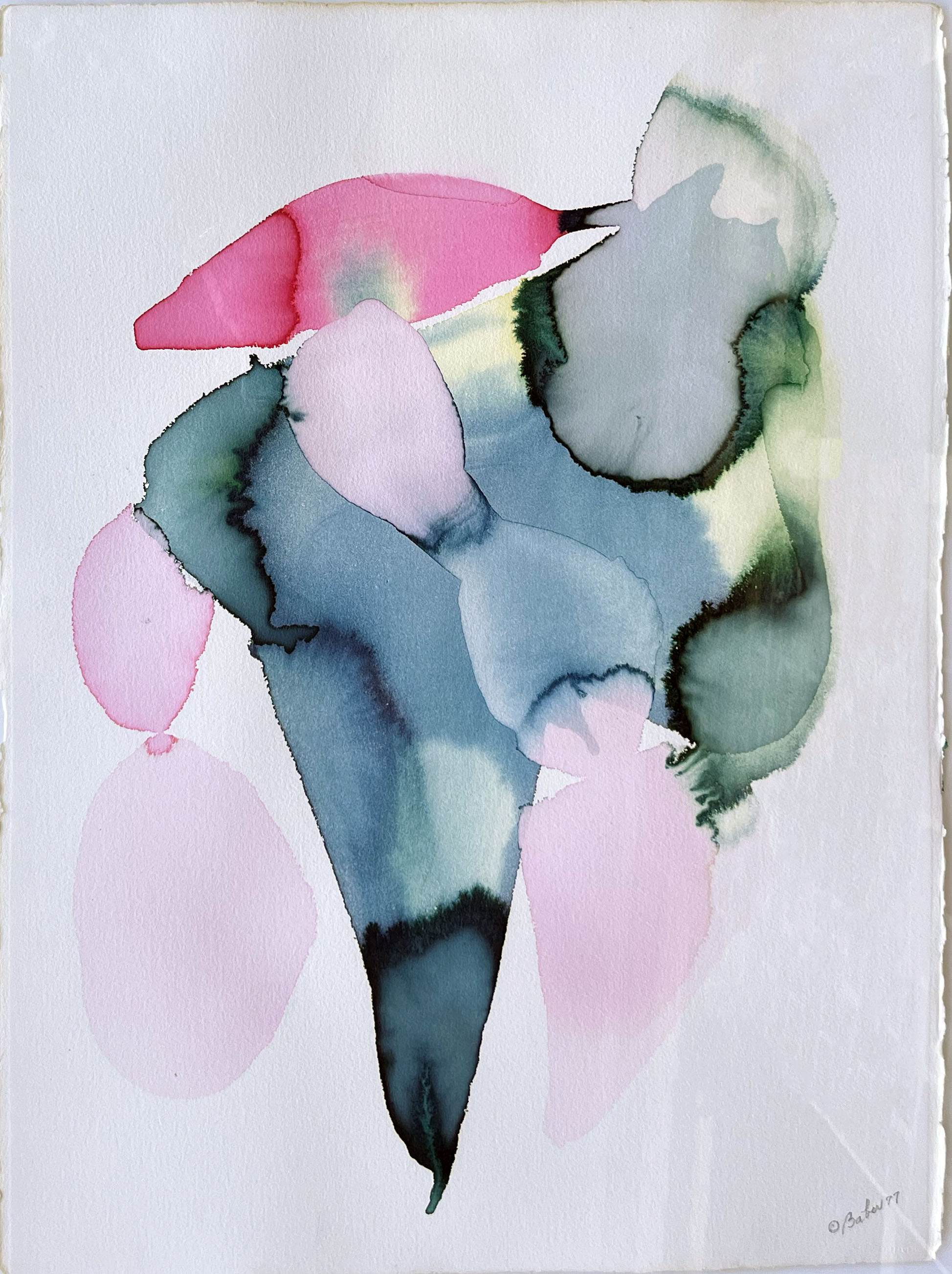ALICE BABER (1928-1982)
Abstract painter, lithographer, and feminist, Alice Baber specialized in paintings of ovals, circles, and free-forms that extolled the radiance of color. Born August 22, 1928, in Charleston, Illinois, the artist was dogged by ill-health as a child, forced to spend her winters in Florida to escape the harsh northern winters. Cancer would claim her on October 2, 1982, in New York City at the relatively young age of fifty-four. She is buried in Fairview Cemetery in Edgar County, Illinois.
Baber began her art studies early as if to compensate for a shortened life, studying drawing as an eight-year-old, and taking a college class by age twelve. She attended Lindenwood College in Missouri for two years, then studied with Alton Pickens, a figurative expressionist painter, at Indiana University in Bloomington. She received her M.A. degree there in 1951.
Travel was an important activity for Baber in the early 1950s, during her marriage from 1964-1970 to abstract painter Paul Jenkins, and throughout her life. In 1951, she studied at the Ecole des Beaux-Arts in Fontainebleau, France, and traveled through Europe. In 1958, she began a several-year period of living in Paris. In 1964, Baber and Jenkins visited Japan for their show at the Osaka Pinacotheca Museum.
Baber visited India twice in the 1970s. In 1974, she had a one-person exhibition in New Delhi, the same year she traveled to Iran for a show in Teheran. In 1976, she traveled to thirteen Latin American countries, lecturing and exhibiting, on a four-month tour sponsored by the United States Information Agency.
In the early 1950s, Baber went to live in New York City, where she became a member of a Tenth Street co-operative gallery, the March Gallery, where she had her first one-person-show in 1958. She attended the Yaddo Colony in Saratoga Springs, New York for the first time in that year. She was supporting herself by writing, later becoming art editor of McCall’s magazine.
Baber organized exhibitions of women artists, including “Color Forum,” in 1972 at the University of Texas, in Austin, and “Color, Light, and Image,” in 1975 in New York City at the Women’s Interart Center, a show of artists from around the world in recognition of the United Nations International Women’s Year. Baber wrote an essay for the catalogue of the Texas show. Phyllis Derfner covered the latter exhibition in the March-April, 1976 issue of Art International.
Baber was a writer and teacher, as well as an artist, serving as artist-in-residence in Albuquerque at the University of New Mexico’s Tamarind Institute lithography workshop. She taught painting at the New School, New York City; the University of California at Santa Barbara, and the University of California, Berkeley. Her stain paintings, different from but related to those of Paul Jenkins, explored both variations of a single color and rich combinations of multiple colors.
Several Alice Baber paintings form the nucleus of the Baber Midwest Modern Art Collection of The Greater Lafayette Museum of Art in Indiana. In East Hampton, Long Island, New York, The Guild Hall Museum established The Alice Baber Memorial Art Library.
Her work is in the collections of the four major New York City museums, The Solomon R. Guggenheim Museum, The Whitney Museum of American Art, The Metropolitan Museum of Art, and The Museum of Modern Art MOMA; and in Washington, D.C. The Corcoran Gallery of Art and The National Museum of Women in the Arts. Other museum collections in the US and around the world include The Santa Barbara Museum of Art, Santa Barbara, California, The San Francisco Museum of Modern Art, SFMOMA, San Francisco, The Georgia Museum of Art, Athens GA, The Weatherspoon Art Museum, Greensboro, NC, The New Britain Museum of American Art , New Britain, CT, The Worcester Art Museum, Worcester, MA, The Wright Museum, Beloit, WI, The Swope Art Museum, Terre Haute, IN, Guild Hall Museum, East Hampton, NY, The Kresge Art Museum, East Lansing, MI, Ball State University Museum of Art, Muncie, IN, Jack S Blanton Museum of Art, Austin, Texas, The Lowe Art Museum, Coral Gables, FL,The Wallrof Richartz Museum, Koln, Germany, The Neuberger Museum of Art, Purchase, NY, The Arkansas Arts Center, Little Rock, AR, The Osaka National Museum of Art, Japan, The Kolnischer Kunstverin Museum, Cologne, Germany, The Stedelijk Museum, Amsterdam, Holland, The Isreael Museum, Jerusalem, The Albertina Museum, Vienna, Austria, and The National Gallery of Modern Art, New Delhi, India.
-AliceBaber.com
SELECTED COLLECTIONS AND MUSEUMS
Albertina Museum, Vienna, Austria,
Ball State University Museum of Art, Muncie, Indiana
Guild Hall Museum, East Hampton, New York
Jack S Blanton Museum of Art, Austin, Texas
Kolnischer Kunstverin Museum, Cologne, Germany
Stedelijk Museum, Amsterdam, Holland
Israel Museum, Jerusalem
Lowe Art Museum, Coral Gables, Florida,
Metropolitan Museum of Art
Museum of Modern Art, New York
National Gallery of Modern Art, New Delhi, India
National Museum of Women in the Arts
Fine Arts Museum of San Francisco
Neuberger Museum of Art, Purchase, New York
Arkansas Arts Center, Little Rock, Arkanasas
New Britain Museum of American Art, New Britain, Connecticut
Osaka National Museum of Art, Japan
San Francisco Museum of Modern Art,
Santa Barbara Museum of Art
Solomon R Guggenheim Museum
Swope Art Museum, Terre Haute, Indiana
The Kresge Art Museum, East Lansing, Michigan
Wallrof Richartz Museum, Koln, Germany
Weatherspoon Art Museum, Greensboro, North Carolina
Whitney Museum of American Art
Worcester Art Museum
Wright Museum, Beloit, Wisconsin
To order any of Baber’s work, please complete the form below stating Alice Baber’s name in the message area, and I will contact you as soon as possible. Or call Judy Ferrara directly at 1-574-276-6001.
For more information please fill out the form below:



